lunamoonmond.tumblr.com + pinterest.com/marcelabee + plus.google.com/u/0/112115964156231947682
Don't wanna be here? Send us removal request.
Text
Today’s Music Insight #1
(Thursday, 27.07.17)
Mika
Relax (Take It Easy)
Writer(s): Michael Penniman, Nicholas Eede
Took a ride to the end of the line Where no one ever goes. Ended up on a broken train with nobody I know. But the pain and the longing's the same. Where the dying Now I'm lost and I'm screaming for help. Relax, take it easy For there is nothing that we can do. Relax, take it easy Blame it on me or blame it on you.
It's as if I'm scared. It's as if I'm terrified. It's as if I scared. It's as if I'm playing with fire. Scared. It's as if I'm terrified. Are you scared? Are we playing with fire? Relax There is an answer to the darkest times. It's clear we don't understand but the last thing on my mind Is to leave you I believe that we're in this together Don't scream - there are so many roads left Relax, take it easy For there is nothing that we can do. Relax, take it easy Blame it on me or blame it on you. Relax, take it easy For there is nothing that we can do. Relax, take it easy Blame it on me or blame it on you. Relax, take it easy For there is nothing that we can do. Relax, take it easy Blame it on me or blame it on you. Relax, take it easy For there is nothing that we can do. Relax, take it easy Blame it on me or blame it on you. (Relax) It's as if I'm scared. It's as if I'm terrified. It's as if I scared. It's as if I'm playing with fire. Relax It's as if I'm terrified. Are you scared? Are we playing with fire? Relax Relax via .http://www.azlyrics.com/lyrics/mika/relaxtakeiteasy.html
Tradução 🇧🇷: https://www.musixmatch.com/pt-br/letras/Mika/Relax-Take-It-Easy-1/traducao/portugues
Traduzione 🇮🇹: https://www.musixmatch.com/pt-br/letras/Mika/Relax-Take-It-Easy-1/traducao/italiano
Traducción 🇪🇸: https://www.musixmatch.com/pt-br/letras/Mika/Relax-Take-It-Easy-1/traducao/espanhol
youtube
7 notes
·
View notes
Text
Today’s Music Insight #2
(Thursday - 27.07.17)
#2. Des’ree
"You Gotta Be"
Writer(s): Ashley Ingram, Desree Annette Weekes
Listen as your day unfolds, Challenge what the future holds Try and keep your head up to the sky Lovers, they may cause you tears Go ahead release your fears, Stand up and be counted Don't be ashamed to cry You gotta be You gotta be bad, you gotta be bold, you gotta be wiser You gotta be hard, you gotta be tough, you gotta be stronger You gotta be cool, you gotta be calm, you gotta stay together All I know, all I know, love will save the day Herald what your mother said Read the books your father read Try to solve the puzzles in your own sweet time Some may have more cash than you Others take a different view, My oh my, heh, hey You gotta be bad, you gotta be bold, you gotta be wiser You gotta be hard, you gotta be tough, you gotta be stronger You gotta be cool, you gotta be calm, you gotta stay together All I know, all I know, love will save the day Time asks no questions, It goes on without you Leaving you behind if you can't stand the pace The world keeps on spinning Can't stop it, if you try to The best part is danger staring you in the face Remember, listen as your day unfolds Challenge what the future holds Try and keep your head up to the sky Lovers, they may cause you tears Go ahead release your fears, My oh my heh, hey, hey You gotta be bad, you gotta be bold, you gotta be wiser You gotta be hard, you gotta be tough, you gotta be stronger You gotta be cool, you gotta be calm, you gotta stay together All I know, all I know, love will save the day You gotta be bad, you gotta be bold, you gotta be wiser You gotta be hard, you gotta be tough, you gotta be stronger You gotta be cool, you gotta be calm, you gotta stay together All I know, all I know, love will save the day
via http://www.azlyrics.com/lyrics/desree/yougottabe.html
Tradução 🇧🇷: https://www.musixmatch.com/pt-br/letras/Des-ree/You-Gotta-Be/traducao/portugues
Traduzione 🇮🇹: https://www.musixmatch.com/pt-br/letras/Des-ree/You-Gotta-Be/traducao/italiano
Traducción 🇪🇸: https://www.musixmatch.com/pt-br/letras/Des-ree/You-Gotta-Be/traducao/espanhol
youtube
0 notes
Text
VOCÊ NUNCA SERÁ CAPAZ DE ALCANÇAR SUAS METAS SE NÃO CONSEGUIR SE PERDOAR POR FALHAR NELAS
Ludmila Vilaverde

Muitos de nós começamos o ano fazendo uma lista de resoluções — mudanças que queremos fazer para sermos mais felizes, como, por exemplo, se alimentar de forma mais saudável, fazer mais trabalhos voluntários, ser um cônjuge mais atencioso, e por aí vai. Mas, como sabemos, muitas vezes falhamos ao cumprir essas metas. E depois de algumas falhas, nós tipicamente desistimos e voltamos aos nossos velhos hábitos. Por que é tão difícil cumprir as resoluções nos obrigam a fazer mudanças efetivas ou duradouras? Eu diria que o problema não é que tentamos e falhamos; o problema é a forma como tratamos a nós mesmos quando falhamos. Eu estudo autocompaixão, e minha pesquisa e a de outros mostraram que a forma como nos relacionamos com o nosso fracasso pessoal — com bondade ou com auto-julgamento severo — é extremamente importante para construir nossa resiliência. Desde a primeira infância, nós somos ensinados que devemos ser bem-sucedidos a qualquer custo. O que muitos de nós não somos ensinados é como “falhar com sucesso”, para que possamos mudar e crescer. Uma das melhores formas de lidar com o fracasso é ter autocompaixão. O que exatamente é autocompaixão?
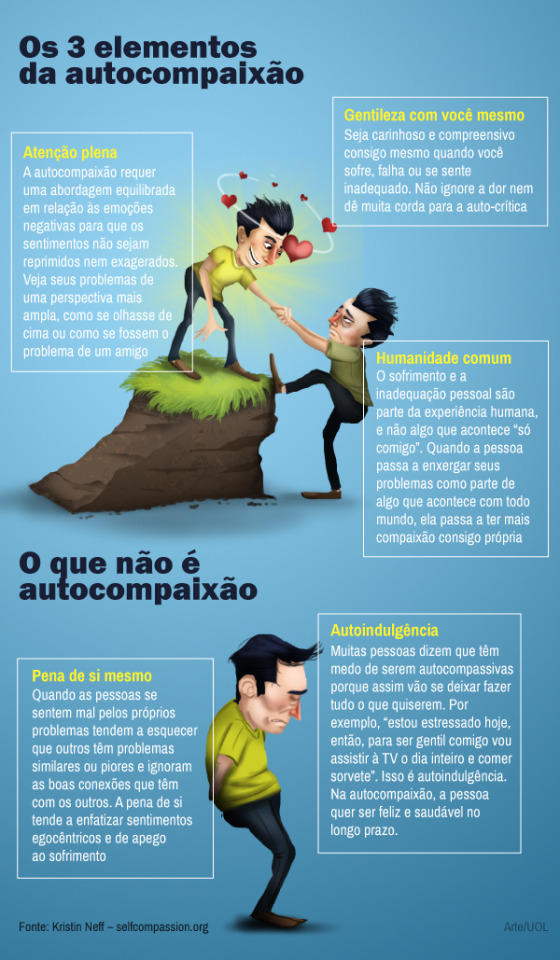
fonte imagem: https://noticias.uol.com.br/saude/ultimas-noticias/redacao/2015/09/15/treinar-a-autocompaixao-ajuda-em-doencas-e-pode-te-levar-a-uma-vida-melhor.htm
Eu defino autocompaixão como um conjunto de três componentes principais: bondade consigo mesmo, senso de humanidade e mindfulness. A bondade consigo mesmo se refere a tendência a ser cuidadoso, compreensivo e solidário com nós mesmos quando falhamos ou cometemos erros ao invés de ser duramente crítico ou julgador. Senso de humanidade envolve o reconhecimento de que todos os seres humanos são imperfeitos, e relacionar a sua condição falha à condição compartilhada de todos os outros seres humanos, para que possamos ter uma melhor perspectiva sobre os nossos próprios defeitos e dificuldades. Mindfulness envolve estar consciente que existe a dor associada ao fracasso, de uma maneira clara e balanceada, para que nós não a ignoremos, mas também não fiquemos obcecados pelas nossas falhas. As três juntas se combinam para criar um estado de espírito autocompassivo. Um grande corpo de pesquisas mostra que a autocompaixão resulta em um maior bem-estar emocional. Uma das descobertas mais consistentes dessa pesquisa é que maior autocompaixão é ligada a menores índices de depressão, ansiedade e estresse. Além de reduzir esses estados mentais negativos, a autocompaixão parece elevar ainda mais os estados positivos, como otimismo, gratidão e curiosidade. Ao responder ao próprio sofrimento com o abraço caloroso da autocompaixão, os sentimentos positivos como a felicidade são gerados, ao mesmo tempo que as emoções negativas são aliviadas. Autocompaixão foi descoberta como sendo uma fonte muito importante de enfrentamento e resiliência ao lidar com diversas situações estressantes da vida, como divórcio, condições crônicas de saúde ou combate militar. Ela também reduz a insatisfação com o próprio corpo e também leva a hábitos alimentares mais saudáveis (relevantes para muitas das resoluções de Ano Novo por aí!). Dúvidas sobre a autocompaixão Se a autocompaixão é tão importante para nós, por que não somos mais bondosos com nós mesmos? Talvez o maior obstáculo para a autocompaixão seja a crença de que ela irá minar nossa determinação. Durante a criação dos filhos, a sociedade já não se atém mais ao ditado “quem o castigo poupa, estraga a criança”. Mas, em se tratando de nós mesmos, muitos de nós pensamos que evitando o castigo da auto-crítica severa, nós estaremos nos tornando mais preguiçosos ou crianças mimadas auto-indulgentes. Esse tema surge constantemente nas oficinas que eu leciono. Claro, as dinâmicas aplicadas no incentivo de nossos filhos e no nosso próprio são bastante similares. Suponhamos que nosso filho adolescente venha para casa com uma nota abaixo da média de aprovação. Você tem duas formas de motivá-lo a se esforçar mais e se sair melhor da próxima vez. Você pode repreendê-lo e dizer o quão estúpido ele é, e que você tem vergonha dele. A outra forma é, sabendo o quão chateado ele está, você daria um abraço nele e perguntaria gentilmente como pode ajudá-lo para que tenha melhores resultados na escola. Esse tipo de resposta carinhosa e encorajadora ajudaria o seu filho a manter a sua autoconfiança e se sentir apoiado emocionalmente. O mesmo se aplica a como agimos com nós mesmos quando falhamos. Como a autocompaixão melhora a nossa determinação? Pesquisas cada vez mais frequentes indicam que maiores níveis de autocompaixão estão ligados a maior determinação. Ela também foi associada com maior iniciativa pessoal – o desejo de alcançar seu potencial máximo. Pessoas autocompassivas também são mais propensas a adotar “metas de maestria”, que focam no aprendizado e domínio de habilidades para melhorar suas competências, e menos propensos a adotar “metas de performance”, que são primariamente focadas em ser bem sucedido para causar uma impressão positiva em outros. Embora pessoas autocompassivas tenham padrões de performance tão altos quanto daqueles que são duramente críticos consigo mesmos, eles não ficam tão abalados quando não alcançam seus objetivos. Como resultado disso, as pessoas autocompassivas têm menos ansiedade causada pela necessidade de desempenho e têm menos comportamentos auto-destrutivos como a procrastinação. As pessoas autocompassivas não só são menos propensas a ter medo do fracasso, quanto quando elas realmente fracassam, elas têm mais chances de reeguerem e tentar de novo. Uma série de experimentos realizados pelos psicólogos Juliana Breines e Serena Chen, da Universidade da Califórnia, em Berkeley, examinou se ajudar estudantes da graduação a se tornarem mais autocompassivos impactaria na sua motivação para mudar. Em um estudo, foi solicitado aos estudantes que relembrassem uma situação pela qual eles se sentissem culpados, – colar numa prova, mentir para seu(a) parceiro(a) romântico, dizer algo que magoou alguém, etc. – algo que ainda fizesse com que se sentissem mal quando pensavam sobre isso. Em seguida, eles foram designados aleatoriamente para um dos três grupos. No grupo de autocompaixão, os participantes foram instruídos a escrever para si mesmos por três minutos, pela perspectiva de um amigo compassivo e compreensivo. No segundo grupo, as pessoas tinham que escrever sobre suas características positivas e, no terceiro, sobre um hobby que eles gostavam. Esses dois grupos de controle ajudaram a diferenciar autocompaixão de falas, atitudes e humor positivos em geral. Os pesquisadores descobriram que os participantes que tiveram ajuda para se tornarem mais compassivos sobre seus “delitos” recentes relataram estar mais motivados a se desculpar pelo prejuízo causado e mais comprometidos a não repetir esse comportamento do que aqueles nos grupos de controle. Sustentando sua motivação através da bondade
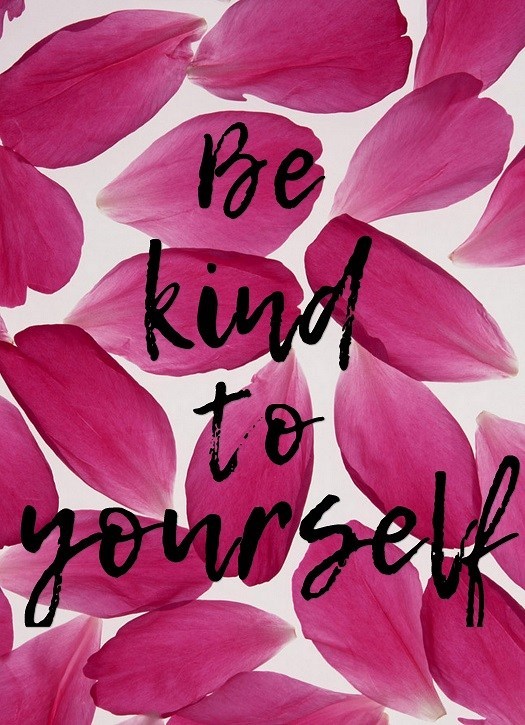
fonte imagem: http://www.revistalilith.com.br/2017/02/27/autocompaixao-como-recurso-de-saude-mental/
Outro estudo na mesma série de experimentos investigou se a autocompaixão se traduzia diretamente em maiores esforços para aprender com as falhas. Os estudantes que participavam do estudo receberam um teste de vocabulário muito difícil e todos se saíram muito mal nele. Um grupo de estudantes recebeu instruções para serem autocompassivos sobre sua falha. A instrução dizia: Se você teve dificuldade no teste que você acabou de fazer, você não está sozinho(a). É comum para os estudantes terem dificuldades em testes como esses. Se você se sente mal sobre o seu resultado, tente não ser tão duro consigo mesmo. Outro grupo recebeu um incentivo para melhorar a sua auto-estima, que dizia: Se você teve dificuldade no teste que acabou de fazer, tente não se sentir mal consigo mesmo – você deve ser inteligente, se conseguiu entrar em Berkeley! O último grupo não recebeu nenhuma instrução adicional. Em seguida, os estudantes foram avisados que receberiam um segundo teste de vocabulário, e receberam uma lista de palavras e definições para que pudessem estudar o máximo que pudessem, antes de fazê-lo. O tempo de estudo foi usado como uma medida do aumento da motivação. Os estudantes que foram ensinados a ser mais compassivos depois de falhar no teste passaram mais tempo estudando do que aqueles dos outros dois grupos. O tempo de estudo teve relação direta ao quão bem os participantes se saíram no teste. Essas descobertas sugerem que ser mais gentil e bondoso consigo mesmo quando você falha ou comete erros te dá o suporte emocional que você precisa para tentar o seu melhor, e continuar tentando mesmo quando se sentir desencorajado. Gentileza e bondade são os motores que nos impulsionam a continuar tentando mesmo depois que caímos de cara no chão. Então, nesse Ano Novo, quando você fizer (e inevitavelmente quebrar) suas resoluções, ao invés de se punir e, então, desistir, tente ser mais gentil consigo mesmo. A longo prazo, você terá mais chances de ter sucesso em suas metas. Fonte: http://tutano.trampos.co/13671-alcancar-metas-perdoar-falhas/ Artigo originalmente publicado em [The Conversation]. Traduzido por Tutano. https://theconversation.com/cant-keep-your-new-years-resolutions-try-being-kind-to-yourself-70698
0 notes
Text
Can’t keep your New Year’s resolutions - try being kind to yourself
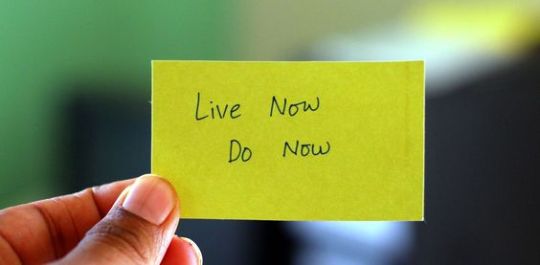
image source: Kalyan Kanuri, CC BY-SA
Many of us will start out the New Year by making a list of resolutions - changes we want to make to be happier such as eating better, volunteering more often, being a more attentive spouse, and so on. But, as we know, we will often fail. After a few failures we will typically give up and go back to our old habits.
Why is it so hard to stick to resolutions that require us to make effective or lasting changes?
I would argue the problem isn’t that we try and we fail –– the problem is how we treat ourselves when we fail. I study self-compassion, and my research and that of others show that how we relate to personal failure - with kindness or harsh self-judgment - is incredibly important for building resilience.
From early childhood, we are taught how we must succeed at all costs. What most of us aren’t taught is how to fail successfully so we can change and grow.
One of the best ways to deal with failure is to have self-compassion.
What exactly is self-compassion?
I define self-compassion as having three main components: self-kindness, common humanity, and mindfulness. Self-kindness refers to the tendency to be caring, understanding, and supportive toward ourselves when we fail or make mistakes rather than being harshly critical or judgmental.
Common humanity involves recognizing that all humans are imperfect, and connecting our own flawed condition to the shared human condition so we can have greater perspective on our shortcomings.
Mindfulness involves being aware of the pain associated with failure in a clear and balanced manner so that we neither ignore nor obsess about our faults. The three together combine to create a self-compassionate frame of mind.
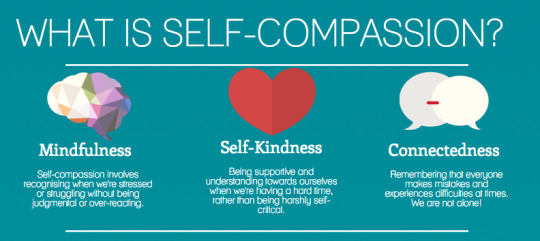
image source: http://compassioninspiredhealth.com/2015/11/13/what-is-self-compassion-2/
A large body of research shows that self-compassion results in greater emotional wellbeing. One of the most consistent findings in this research is that greater self-compassion is linked to less depression, anxiety and stress.
In addition to reducing such negative mind states, self-compassion appears to enhance positive mind states such as optimism, gratitude, and curiosity. By meeting one’s suffering with the warm embrace of self-compassion, positive feelings such as happiness are generated at the same time that negative emotions are alleviated.
Self-compassion has been found to be an important source of coping and resilience in the face of various life stressors such as divorce, chronic health conditions, or military combat. It also reduces body dissatisfactionand even leads to healthier eating behavior (relevant to many New Year’s resolutions!)
Misgivings about self-compassion
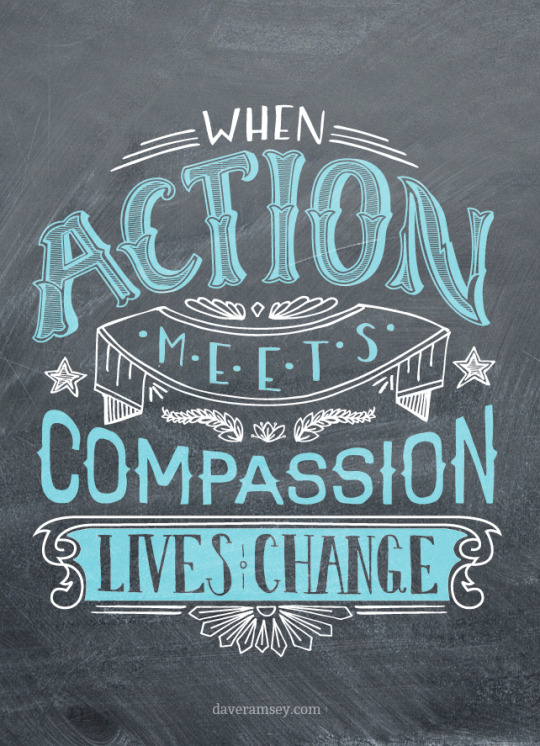
image source: https://www.daveramsey.com/blog/action-meets-compassion
If self-compassion is so good for us, why aren’t we kinder to ourselves?
Perhaps the biggest block to self-compassion is the belief that it will undermine our motivation. In parenting circles we no longer hold to the adage “spare the rod spoil the child.” When it comes to our own selves, however, many of us think that sparing the rod of harsh self-criticism will turn us into lazy, self-indulgent ne'er-do-wells. This theme constantly comes up in the workshops I teach.
Of course, the dynamics that go into motivating our children and motivating ourselves are quite similar. Let’s say your teenage son were to come home with a failing English grade. You have two ways to motivate him to try harder and do better next time.
You could admonish him and tell him how stupid he is and that you are ashamed of him. The other is, knowing how upset he is, you could give him a hug and gently ask him how you could support him in doing better next time. This type of caring, encouraging response would help your son maintain his self-confidence and feel emotionally supported. The same goes for how we respond to ourselves when we fail.
How does self-compassion increase motivation?
A growing body of research indicates that self-compassion is linked to greater motivation. Self-compassion has been associated with increased personal initiative –– the desire to reach one’s full potential.
Self-compassionate people are also more likely to adopt “mastery goals”, which focus on learning and mastering material to increase competence, and less likely to adopt “performance goals,” which are primarily concerned with succeeding to make a favorable impression on others.
While self-compassionate people have performance standards that are as high as those who are harshly self-critical, they don’t get as upset when they don’t reach their goals. As a result, self-compassionate people have less performance anxiety and engage in fewer self-defeating behaviorssuch as procrastination.
Not only are self-compassionate people less likely to fear failure, when they do fail they’re more likely to pick themselves up and try again.
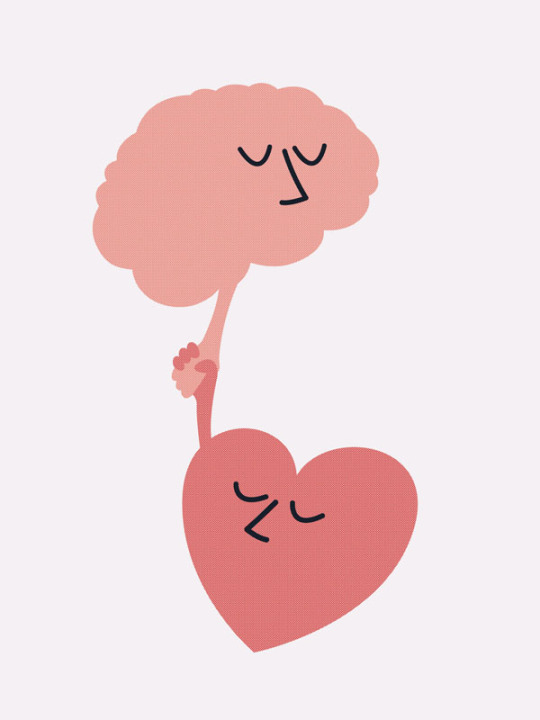
Image source: http://vergecampus.com/2016/02/case-self-compassion/
A series of experiments by psychologists Juliana Breines and Serena Chen from the University of California at Berkeley examined whether helping undergraduate students to be more self-compassionate would impact their motivation to change.
In one study, participants were asked to recall a recent action they felt guilty about - cheating on an exam, lying to a romantic partner, saying something harmful, etc. –– something that still made them feel bad when they thought about it.
Next, they were randomly assigned to one of three conditions. In the self-compassion condition, participants were instructed to write to themselves for three minutes from the perspective of a compassionate and understanding friend.
The second condition had people write about all their positive qualities, and the third about a hobby they enjoyed. These two control conditions helped to differentiate self-compassion from positive self-talk and positive mood in general.
The researchers found that participants who were helped to be self-compassionate about their recent transgressions reported being more motivated to apologize for the harm done and more committed to not repeating the behavior than those in the control conditions.
Sustaining motivation through kindness
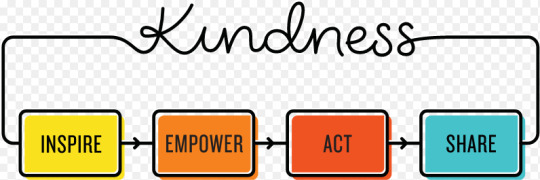
Image source: http://www.discoverkindnessintheclassroom.com/
Another study in this same series of experiments explored whether self-compassion would directly translate into greater efforts to learn after failure. Students were given a difficult vocabulary test they all did poorly on.
One group of students were given an instruction to be self-compassionate about their failure. The instruction said,
“If you had difficulty with the test you just took, you’re not alone. It’s common for students to have difficulty with tests like this. If you feel bad about how you did, try not to be too hard on yourself.”
Another group was given a self-esteem boost, which said,
“If you had difficulty with the test you just took, try not to feel bad about yourself — you must be intelligent if you got into Berkeley!”
A third group of participants were given no additional instructions.
The students were next told that they would receive a second vocabulary test, and were given a list of words and definitions they could study for as long as they wanted before taking it. Study time was used as a measure of improvement motivation.
The students who were told to be self-compassionate after failing the first test spent more time studying than those in the other two conditions. Study time was linked to how well participants actually performed on the test. These findings suggest that being kind to yourself when you fail or make mistakes gives you the emotional support needed to try your best, and to keep trying even when discouraged.
Kindness is the engine that drives us to keep trying even after we fall flat on our face. So this New Year, when you make and inevitably break your resolutions, instead of beating yourself up and then giving up, try being kind to yourself. In the long run you’ll be more likely to succeed.
via https://theconversation.com/cant-keep-your-new-years-resolutions-try-being-kind-to-yourself-70698
0 notes
Text
The Costanza Principle: Better Decisions Through Your Inner Contrarian
_Thorin Klosowski_ _7/25/14 7:20pm_
When it comes to making strong, objective decisions, you're about the last person on earth you should trust. So today, we're taking a page from Seinfeld's George Costanza.
Blast from the past is a weekly feature at Lifehacker in which we revive old, but still relevant, posts for your reading and hacking pleasure. This week, we're empowering our inner contrarian.
youtube
Generally speaking, humans aren't very good at quickly gauging the quality of our choices. We use shortcuts, fall back on stereotypes, and make choices based on limited amounts of information. This often works for our minor, day-to-day choices, but we're inadvertently limiting our scope and not considering a wide variety of worthwhile options. In an episode of Seinfeld called The Opposite (see video above), George Costanza decides to toss his gut instincts to the curb and instead consider radical alternatives to what his instincts tell him to do—and it works.
Obviously there's a significant difference between a sitcom and real life, but Costanza's opposite principle is more constructive than you might think. To illustrate my point, here are a few cases when it's a good idea to doubt your brain.
When "What Comes Naturally" Isn't Always In Your Best Interest

We're wired to put more weight on a decision that leads to an immediate reward, that's not always the case. Psychology Today puts this rather bluntly:
Our instincts most often drive us toward instant gratification.
Instant gratification is not always a bad thing, but more often than not we prioritize the moment over the future. We convince ourselves that our instincts are right when they're not. The myth that your body "tells you what it needs"when you're craving something is a good example of this. It's a blatant trick your brain plays on you in order to get a reward.
Instant gratification is not always a bad thing, but more often than not we prioritize the moment over the future. We convince ourselves that our instincts are right when they're not. The myth that your body "tells you what it needs"when you're craving something is a good example of this. It's a blatant trick your brain plays on you in order to get a reward.
Instant gratification also comes in the form of protection. Your brain treats uncertainty as a threat, and your natural reaction may not be in your best interest because it's trying to protect you from something it doesn't need to. It might just be that you're worried about the uncertainty of disappointment or embarrassment.
In George Costanza's (clearly absurd) case, avoiding perceived risk led him nowhere. By considering an alternative (described as "the opposite"), he was rewarded with a date and a new job.
Solution: Learn to Differentiate Between "Feeling Right" and "Being Right"
It might seem negligible, but learning to differentiate between "feeling right" and "being right" is key. The first a knee-jerk reaction to a situation based on your feelings; the second is a quantifiable truth.
As science writer David DiSalvo points out in his book What Makes Your Brain Happy and Why You Should Do the Opposite, knowing the difference requires recognizing that difference:
A happy brain interprets uncertainty as a threat and wants us to get back to "right." But what we often overlook is that what we are really trying to recover is the feeling of being right—because it is the emotional response to rightness that shuts off the alarms and puts us at ease... The truth, however, is that the evidence may not align with the source of your certainty and that's a difficult realization for any one of us to acknowledge.
Certainty is two-fold. On one hand, it's all about the facts (we'll get to that more in the next section); but it's also about emotional forecasting. You might not take a small risk because you feel like you know what would happen, but in reality humans are terrible at predicting the future, and you often don't take your own personality into account when making choices. Considering alternatives is a way to find out if a choice is really the best one.
Your History and Self-Perception Has More Influence Than You Think
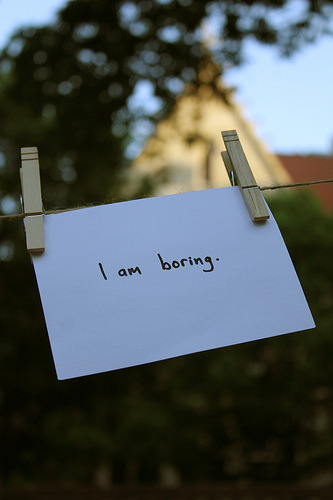
We're all biased thinkers and a lot of the bias comes from personal history. Some of that history is what we've made for ourselves, and some of it has been inscribed on us by other people's interpretations ofus. Scientific American sums it up like so:
We can learn, we can improve, and we can change our habitual approach to the world. Take the example of stereotype threat, an instance where others' perception of us—or what we think that perception is—influences how we in turn act, and does so on the same subconscious level as all primes.
Think of a stereotype threat like this: all your life people have been introducing you as "the quiet one" or "the shy person." Internally you might interpret those introductions as a way to act even when you don't feel like they apply to you. Subsequently, you base decisions on this idea—you remain quiet during a dinner or don't speak up in a conversation—even though it's not what you want to do. Photo by Quinn Dombrowski.
Solution: Challenge Your Personal Myth (Do the Opposite)
This is where Costanza's opposite approach best applies. In order to challenge your "personal myth" you have to do (or at least imagine doing) the exact opposite of what you normally do. As science blog Big Think points out the first step is knowing what you do and that that behavior can be changed:
What is the mindset you typically have when it comes to yourself? If you don't realize you have it, you can't do anything to combat the influences that come with it when they are working against you, as happens with negative stereotypes that hinder performance-and even when they are working for you (as can happen if you activate positively-associated stereotypes), you may be able to better tap the benefits if you are aware that they are there to begin with.
The second step is to take a little action and give new things a try. The next time you're faced with a social decision (preferably one without horrible repercussions), considering looking at the alternative. You may be pleasantly surprised with the results and if nothing else you'll learn a little about an opposing view of the world.
Your Viewpoint Is Incredibly Limited

You don't know everything and you can't see everything from different viewpoints. We've covered how confirmation bias colors your decisionsbecause you gravitate towards like-minded ideas, but just as important is the idea of an availability heuristic.
The availability heuristic is essentially a decision making shortcut that means "if you can think of it, it must be important." This is when you add emphasis to details because you've heard of them. For instance, if you've seen a lot of stories about zombie-like behavior, you're more willing to accept the fact that zombies are real.
Both confirmation bias and the availability heuristic boil down to one thing: you prioritize one idea because everything else seems unlikely to you. This leads to close-mindedness which can cause bad decisions and block creativity.
Solution: Reverse Your Assumptions to Understand the Counter Position
You have to accept that you don't know all the facts and what you do know is probably skewed based on your perception of the events. One way to do this is reverse your assumptions to see new ideas. Psychology Today offers one system to do this:
List all your assumptions about your subject.
Reverse each assumption. What is its opposite?
Ask yourself how to accomplish each reversal.
When you reverse your assumptions you often find new ideas along with new viewpoints. This might include ways to solve creative problems, see other points of view on political issues, or better understand an opinion you don't agree with. It's not about changing your mind. It's about finding the other possibilities that exist and making a choice with more variables.
The idea here isn't that you go all out and do the exact opposite of everything (unless your disposition is really that close to George Costanza), but to consider the alternatives of your default behavior. If you're anything like me you'll be surprised at how often you're completely wrong about decisions, risks, and your own perception.
Our brains trick us in all types of different ways that we didn't cover above and most of the time we never notice it happening. Have you ever done the exact opposite of your usual behavior with successful results? Share your experiences in the comments.
via https://lifehacker.com/5920188/the-costanza-principle-empower-your-inner-contrarian-and-make-better-decisions
1 note
·
View note
Text
Ven. Burin Thitakusalo me surpreendeu. A Paz Mundial é possível (e agora)!
A Virada Sustentável Rio 2017 contava com muitas opções de atividades espalhadas pela cidade. Percebi que o Parque Lage seria um dos principais locais do evento. Ao ver a programação e descobrir a meditação guiada com o Ven. Burin me pareceu uma oportunidade única e imperdível que precisava aproveitar, mesmo que não soubesse quem ele era.

https://www.viradasustentavel.org.br/rio-de-janeiro/atracao/meditacao-pela-paz-com-monge-ven-burin.html?id=3058 Decidi não me informar, me permiti não saber, descobrir e aprender tudo no dia a partir da experiência presencial. É uma maneira de viver o não controle na prática. É uma maneira de estar aberto para dar e receber. Se surpreender com o novo e desconhecido nos dias de hoje é uma escolha deliberada que envolve uma doação generosa e amorosa de nosso tempo, atenção, presença, cuidado, gratidão na relação com os outros. Chegamos atrasadas (por um bom motivo) e pegamos a meditação guiada já pelas metades. Depois Ven. Burin falou sobre como vem transformando a paz mundial em algo possível através da meditação! Com o Middle Way Meditation Institute (MWMI) ele vem ensinando e promovendo a Paz Mundial a partir da Paz Interior a partir de técnicas de meditação e outros conhecimentos. http://mdwmeditation.org/
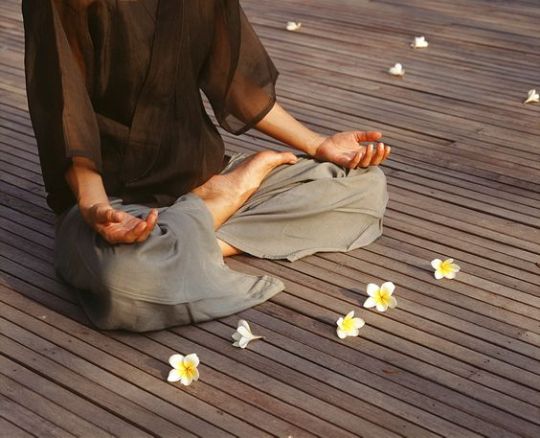
Ao pesquisar sobre o Instituto algo muito interessante aconteceu: descobri outros 2 projetos de paz interior a partir da meditação budista na Tailândia!! Isso me trouxe uma pergunta que ainda não tenho resposta: Por que será que existem tantos projetos desse tipo na Tailândia? E daí me veio a dúvida: E no Brasil? Existem projetos semelhantes? Quantos? ¹ Ven. Burin aproveitou a ocasião para nos contar que neste ano ele quer trazer a paz interior para o Brasil! E isso irá acontecer com 2 eventos. O primeiro, chamado de Inner Peace Leader Retreat, será um retiro de formação de líderes da paz interior (Inner Peace leader). http://mdwmeditation.org/course/inner-peace-leader-retreat-brazil/ O segundo, The Global Light of Peace 2017, será um evento ao vivo "para conectar milhões de pessoas dos 6 continentes do mundo para meditar simultaneamente pela paz mundial." Serão 6 cidades e o Rio de Janeiro irá representar o Brasil e a América do Sul no dia 5 de setembro!
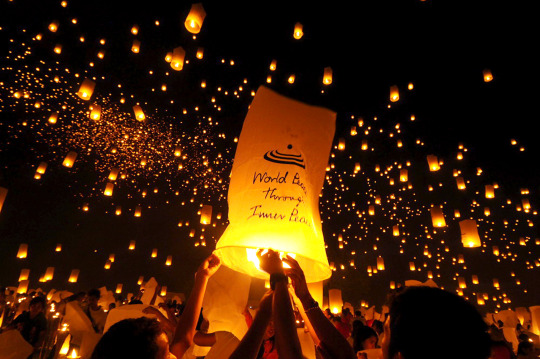
http://mdwmeditation.org/project/global-light-peace-2017/ Durante toda a palestra sorri, me emocionei, ri. Saí de lá fortalecida. Mudar o mundo pode parecer uma prática solitária. E às vezes é assim mesmo! Começa com um, começa em nós mesmos. A boa notícia é que não estamos sozinhos nessa jornada (interior e exterior) e podemos contar com outras pessoas que já estão nesse mesmo caminho. No dia 5 de setembro serão muitos! Você vem? Gratidão ❤️ ao Ven. Burin, à Virada Sustentável Rio 2017, a minha querida amiga e sua amiga (minhas companhias nesse dia especial), a todos presentes no evento. por Marcela Bee @ 18.06.17
Fonte das imagens: https://www.robertharding.com/preview/238-5434/meditation-lotus-position/ https://globalengagementbirmingham.wordpress.com/2013/05/26/lanterns-light-up-the-sky-in-the-philippines/
0 notes
Text
You are the fact-checker now
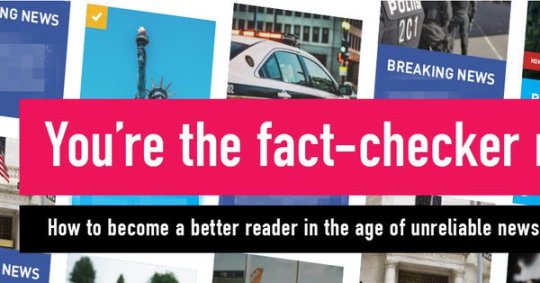
No matter what media stream you depend on for news, you know that news has changed in the past few years. There’s a lot more of it, and it’s getting harder to tell what’s true, what’s biased, and what may be outright deceptive. While the bastions of journalism still employ editors and fact-checkers to screen information for you, if you’re getting your news and assessing information from less venerable sources, it’s up to you to determine what’s credible.
“We are talking about the basic duties of informed citizenship,” says Sam Wineburg, Margaret Jacks Professor of Education. Wineburg and Sarah McGrew, a doctoral candidate in education, tested the ability of thousands of students ranging from middle school to college to evaluate the reliability of online news. What they found was discouraging: even social media-savvy students at elite universities were woefully unskilled at determining whether or not information came from reliable, unbiased sources.

Read about Sam Wineburg’s study. Read Wineburg’s take on what schools can do. Read the IAB Edelman Berland summary
Is this a blind spot limited to kids who have grown up taking for granted that what they read on screens is true? Unfortunately, no. We’re all “coming of age” in what Wineburg says are the birth pangs of a Post-Gutenberg moment. “We’ve invented tools that right now have the best of us rather than us having the best of them. And we’re trying to cope with the consequences. If we are becoming informed through feeds that come across social media, then we are obliged to have at our disposal two or three basic tools to allow us to ascertain whether something that has come across our feeds is worthy of belief or whether it . . . is intended to deceive.” Wineburg and McGrew went to professional fact-checkers to see what was different about how they attack a story from a new source or unfamiliar site. Read laterally, not vertically In the same way hiking in unfamiliar terrain without orienting yourself on a map would be a huge waste of time and energy, so is going deep into a story or unfamiliar site before you know who is supplying the information and what their stance is. When you encounter that intriguing story in your Facebook feed, before getting deep into it, open another browser tab and “…find out ‘what is this organization?’” Wineburg says. “When you come back to the original web page you evaluated, you have a much better sense of where that information is correct, where it is fallacious, whether it’s reliable, and whether you want [it] to build your rapport for your article or inform your own opinion about what that article contains.”
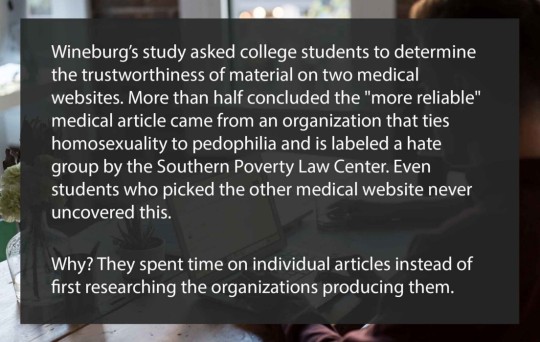
Look beyond the About page You’ve never heard of this particular organization but their website looks thorough and their About page mentions some credible sounding backers. Wineberg says to keep looking. With a little cunning and some basic skills, anyone can create and run a site from their kitchen table that looks and sounds reliable (or unbiased, or “funded by the citizens”. . .you get the idea). Moreover, with a little viral social media help, Wineburg says those sites (and their stories) can achieve clicks, likes and comments that rival highly circulated newspapers. A simple way to begin vetting an unknown site is to search for the organization’s name in quotes. This will turn up mentions of the organization in other articles and on other sites, which can help you determine their credibility. Add terms like “funding” to your search to find out information that may not be apparent on the site.
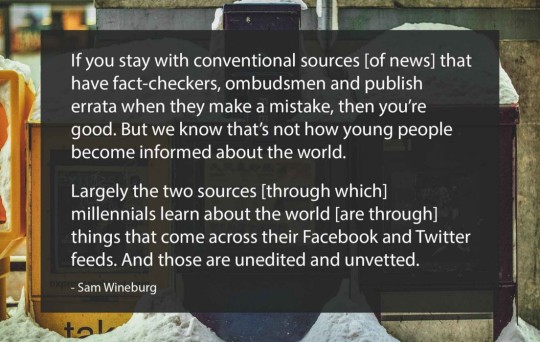
Scroll down and click out of order When you search on Google, the order of the results is determined by a number of factors, including how many other pages link to that page — but trustworthiness is not one of them. The top results are not necessarily unbiased or the most trustworthy. Fact-checkers scroll down and read the urls and abstracts to make an informed decision about where to click first. Google puts a world of information in front of you. But that means there are front groups and fake news sites right next to legitimate and reliable sources. You have to know how to to find the difference (hint, go back to steps 1 and 2). ... “Accurate information is an absolutely essential ingredient to civic health,” says Wineburg. “Reliable information is to civic health what clean air and clean water are to public health. And so, if we are making decisions as voters based on felonious assumptions because we haven’t done due diligence and even surpassed a modicum of checking about the quality of our information, then when we press the lever in the ballot box, we are operating on a shaky foundation.” We may not be able to stop the stampede of news coming at us, but we can better wrangle it, giving our precious time to the sources we are confident are worth our time and making the best decisions possible for our future.
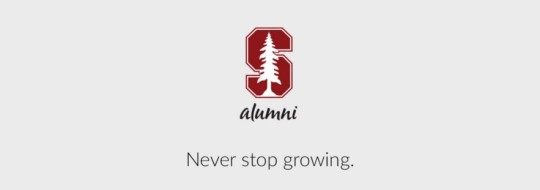
via https://medium.com/stanford-alumni/youre-the-fact-checker-now-60103eaeaf3a
image source: https://medium.com/stanford-alumni/youre-the-fact-checker-now-60103eaeaf3a
#communication#new media#internet revolution#reading#news#content production#content curation#stanford university#stanford alumni#medium
0 notes
Text
Kintsugi: the art of precious scars
by STEFANO CARNAZZI Translated by FRANCESCA CLEMENTE

By repairing broken ceramics it’s possible to give a new lease of life to pottery that becomes even more refined thanks to its “scars”. The Japanese art of kintsugi teaches that broken objects are not something to hide but to display with pride. When a bowl, teapot or precious vase falls and breaks into a thousand pieces, we throw them away angrily and regretfully. Yet there is an alternative, a Japanese practice that highlights and enhances the breaks thus adding value to the broken object. It’s called kintsugi (金継ぎ), or kintsukuroi (金繕い), literally golden (“kin”) and repair (“tsugi”). This traditional Japanese art uses a precious metal – liquid gold, liquid silver or lacquer dusted with powdered gold – to bring together the pieces of a broken pottery item and at the same time enhance the breaks. The technique consists in joining fragments and giving them a new, more refined aspect. Every repaired piece is unique, because of the randomness with which ceramics shatters and the irregular patterns formed that are enhanced with the use of metals. The scars become what to exhibit With this technique it’s possible to create true and always different works of art, each with its own story and beauty, thanks to the unique cracks formed when the object breaks, as if they were wounds that leave different marks on each of us. The invention of the kintsugi technique and its meaning The glue traditionally used to bring the pieces together is the urushi lacquer, which is being sourced for thousands of years from the Rhus verniciflua plant. The Chinese have been using it for thousands of years while in Japan, in the Shimahama Tomb in Fukui Prefecture, archaeologists found objects including combs and lacquered trays that were used in the Jomon period about 5,000 years ago. Initially, this sticky sap was used for its adhesive qualities to create war and hunting weapons.
youtube
The kintsugi technique may have been invented around the fifteenth century, when Ashikaga Yoshimasa, the eighth shogun of the Ashikaga shogunate after breaking his favourite cup of tea sent it to China to get it repaired. Unfortunately, at that time the objects were repaired with unsightly and impractical metal ligatures. It seemed that the cup was unrepairable but its owner decided to try to have some Japanese craftsmen repair it. They were surprised at the shogun’s steadfastness, so they decided to transform the cup into a jewel by filling its cracks with lacquered resin and powdered gold. The legend seems plausible because the invention of kintsugi is set in a very fruitful era for art in Japan. Under Yoshimasa’s rule the city saw the development of the Higashiyama bunka cultural movement that was heavily influenced by Zen Buddhism and started the tea ceremony (also called Sado or the Way of Tea) and ikebana (also Kado, way of flowers) traditions, the Noh theatre, the Chinese style of painting with ink. Even today, it may take up to a month to repair the largest and most refined pieces of ceramics with the kintsugi technique, given the different steps and the drying time required. How many beautiful messages the kintsugi technique conveys The kintsugi technique suggests many things. We shouldn’t throw away broken objects. When an object breaks, it doesn’t mean that it is no more useful. Its breakages can become valuable. We should try to repair things because sometimes in doing so we obtain more valuable objects. This is the essence of resilience. Each of us should look for a way to cope with traumatic events in a positive way, learn from negative experiences, take the best from them and convince ourselves that exactly these experiences make each person unique, precious.

via http://www.lifegate.com/people/lifestyle/kintsugi
image source: https://www.lifegate.com/people/lifestyle/kintsugi
0 notes
Text
Metafora e tecnica del kintsugi: l’arte delle preziose cicatrici
Pubblicato il 30 GEN 2016 di STEFANO CARNAZZI
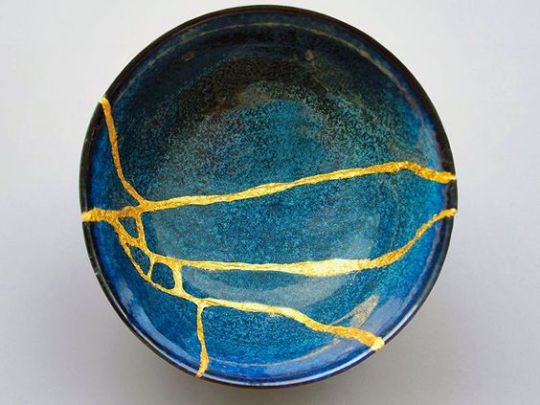
Rompendosi, la ceramica prende nuova vita attraverso le linee di frattura all’oggetto, che diventa ancora più pregiato. Grazie alle sue cicatrici. L’arte di abbracciare il danno, di non vergognarsi delle ferite, è la delicata lezione simbolica suggerita dall’antica arte giapponese del kintsugi. Quando una ciotola, una teiera o un vaso prezioso cadono frantumandosi in mille cocci, noi li buttiamo con rabbia e dispiacere. Eppure c’è un’alternativa, una pratica giapponese che fa l’esatto opposto: evidenzia le fratture, le impreziosisce e aggiunge valore all’oggetto rotto. Si chiama kintsugi (金継ぎ), o kintsukuroi (金繕い), letteralmente oro (“kin”) e riunire, riparare, ricongiunzione (“tsugi”). Quest’arte giapponese prescrive l’uso di un metallo prezioso – che può essere oro o argento liquido o lacca con polvere d’oro – per riunire i pezzi di un oggetto di ceramica rotto, esaltando le nuove nervature create. La tecnica consiste nel riunirne i frammenti dandogli un aspetto nuovo attraverso le cicatrici impreziosite. Ogni pezzo riparato diviene unico e irripetibile, per via della casualità con cui la ceramica si frantuma e delle irregolari, ramificate decorazioni che si formano e che vengono esaltate dal metallo.
youtube
Così le cicatrici diventano bellezza da esibire
Con questa tecnica si creano vere e proprie opere d’arte, sempre diverse, ognuna con la propria trama da raccontare, ognuna con la propria bellezza da esibire, questo proprio grazie all’unicità delle crepe che si creano quando l’oggetto si rompe, come fossero le ferite che lasciano tracce diverse su ognuno di noi. La nascita della tecnica kintsugi e il suo significato Tradizionalmente, il collante usato è la lacca urushi, che si ricava da millenni dalla pianta Rhus verniciflua. I cinesi la utilizzavano da millenni e in Giappone, nella Tomba Shimahama nella Prefettura di Fukui, sono stati rinvenuti oggetti laccati come pettini e vassoi, usati nel periodo Jomon circa 5.000 anni fa. Inizialmente questa linfa appiccicosa era utilizzata, per le sua qualità adesive, nella realizzazione di armi da guerra e da caccia. La tecnica kintsugi potrebbe essere stata inventata intorno al XV secolo, quando Ashikaga Yoshimasa, ottavo shogun dello shogunato Ashikaga, dopo aver rotto la propria tazza di tè preferita la inviò in Cina per farla riparare. Purtroppo le riparazioni all’epoca avvenivano con legature metalliche poco estetiche e poco funzionali. La tazza sembrava perduta, ma il suo proprietario decise di ritentare la riparazione affidandola ad alcuni artigiani giapponesi, i quali sorpresi dalla tenacia dello shogun nel riavere la sua amata tazza, decisero di provare a trasformarla in gioiello riempiendo le crepe con resina laccata e polvere d’oro. La leggenda è plausibile perché situa la nascita del kintsugi in un periodo molto fecondo, per l’arte, in Giappone. Durante il governo di Yoshimasa si assistette allo sviluppo dell’Higashiyama bunka, un movimento culturale fortemente influenzato dal buddhismo Zen e che diede origine alla cerimonia del tè (anche Sado o via del tè), all’ikebana o (anche Kado, via dei fiori), al teatro No, alla pittura con inchiostro cinese. Ancora oggi, per riparare i pezzi più grandi e pregiati con la tecnica kintsugi, dati i diversi passaggi necessari e il tempo di essiccazione, può occorrere fino a un mese.
Quanti messaggi belli, ci dà il il kintsugi
Il kintsugi suggerisce paralleli suggestivi. Non si deve buttare ciò che si rompe. La rottura di un oggetto non ne rappresenta più la fine. Le sue fratture diventano trame preziose. Si deve tentare di recuperare, e nel farlo ci si guadagna. È l’essenza della resilienza. Nella vita di ognuno di noi, forse, si deve cercare il modo di far fronte in maniera positiva a eventi traumatici, di crescere attraverso le proprie esperienze dolorose, di valorizzarle, esibirle e convincersi che sono proprio queste che rendono ogni persona unica, preziosa.
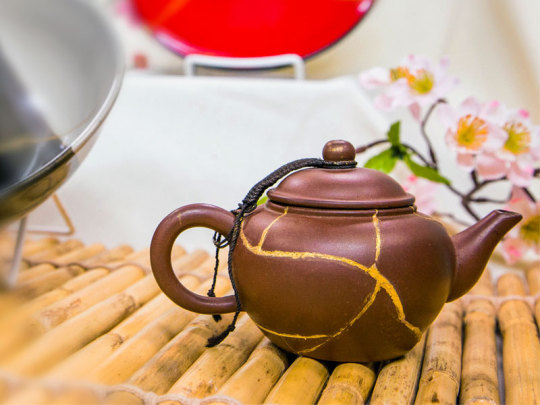
Via http://www.lifegate.it/persone/stile-di-vita/kintsugi-larte-delle-preziose-cicatrici
Immagine via http://www.lifegate.it/persone/stile-di-vita/kintsugi-larte-delle-preziose-cicatrici
0 notes
Text
The magic of being held by the world
by Leo Babauta
Right now, as you read this article, you are being held up by an invisible, magic web.
Consider the following, with gratitude in your heart:
You are reading an article written for you by me, sent across the Internet thanks to the work of thousands and thousands of engineers and power workers and workers in computer factories, using a computer device produced by thousands of people around the world.
You are alive because you ate food and drink produced and delivered and served by thousands of people. You have shelter built by thousands of people (when you consider the manufacturing process), powered by a power system where thousands of people work every day, with water coming to you produced by thousands of people, cable (or Internet) entertainment streamed to you that was produced by millions of people. Your furniture, clothes, appliances, car, roads, work buildings, city were all built by millions of people.
When you were born, you were incapable of living without the support of your family, who fed, clothed, sheltered you, changed your diapers, kept you alive every single day. They were supported by many others, and then you were educated by many more. You were raised by a village, no matter what your childhood was like.
Your entire existence has been supported by millions of people, for your whole life, including right now.
And it’s not just your physical existence: your thoughts have been influenced by writers, pundits, TV shows, films, music, educators, friends and family, the work you do with others, politicians and government, philosophers and religious figures, the environment you live in. What you think and who you are is not something you just invented, it has been created by everyone and everything around you.
You have been co-created by every other human being alive, by the entire world. And your actions have co-created those around you as well.
You are held up by an invisible, magic web of human lives and thought, of food and shelter and electricity and devices, of human creation and nature and the cosmos around you.
We co-create each other, every moment. And we take it all for granted.
The only reasonable response to this realization is gratitude. Applause. Joy.
We are all connected, and our actions matter. How can you co-create the world around you today? What loving action can you take right now, to care for others around you, to make their lives better? What can you do to appreciate and show gratitude for those who have supported you?
Fill your heart with love for those who have created you, and fill their lives with your love so you can create something amazing for them.
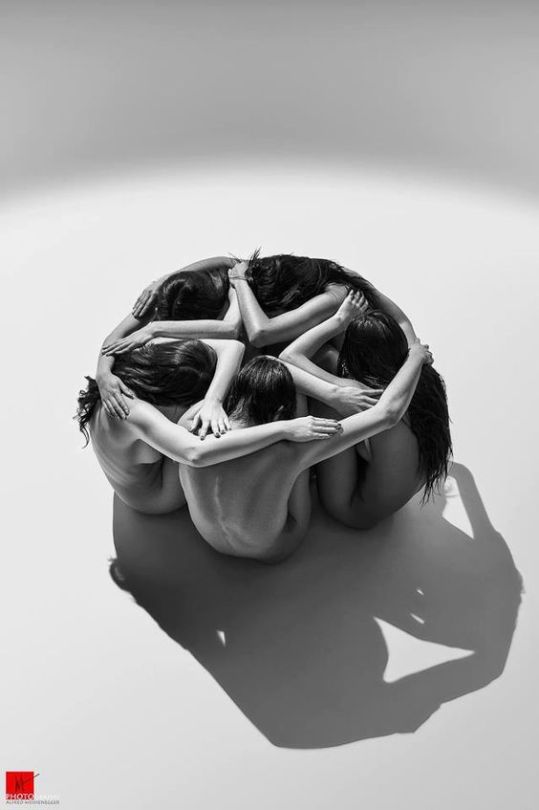
via https://zenhabits.net/magic/
image source: https://www.instagram.com/p/kMr7ocn1Mv/
1 note
·
View note
Text
Human Mind
"Buddha said that human mind should be more feared than poisonous snakes and dangerous thieves. Get to know your mind to make good use of it and to deliver act of kindness for all living beings."
Monja Coen
version from pt to eng: Marcela Bee
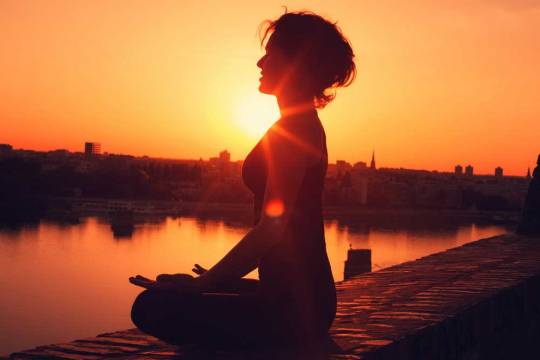
via https://www.youtube.com/watch?v=80HyDP5ESqw image source: https://ayurveda.com.br/o-ayurveda-e-a-meditacao/
0 notes
Text
"Buda dizia que a mente humana deve ser mais temida que cobras venenosas e assaltantes vingadores. Conheça pra usar bem e para fazer o bem a todos os seres"
Monja Coen

via https://www.youtube.com/watch?v=80HyDP5ESqw
1 note
·
View note
Text
If you have a chance...
... live it!
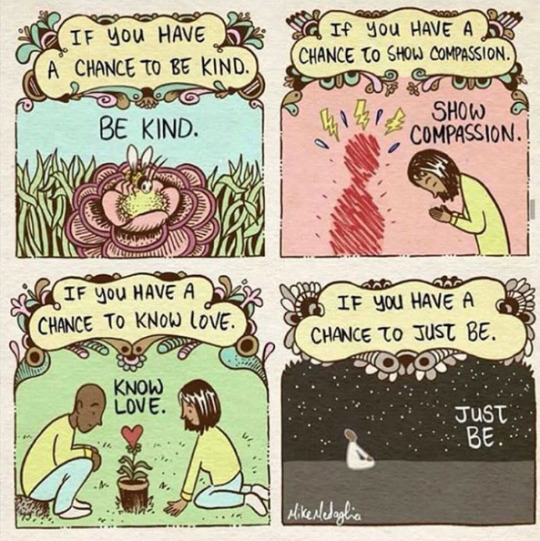
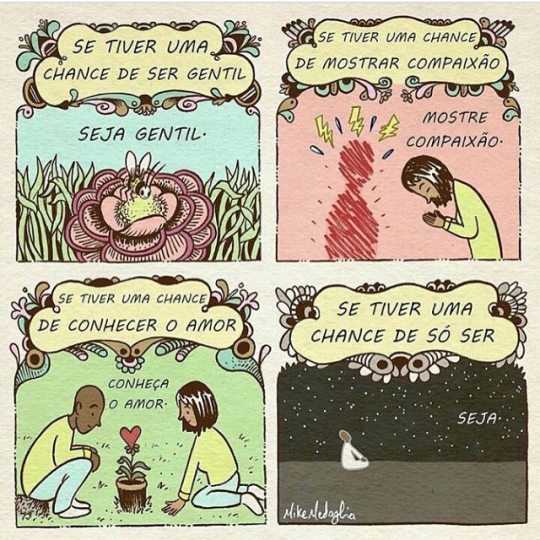
via https://psicoonline.tumblr.com/post/160453392483/seja-sempre-que-puder-mas-lembre-que-n%C3%B3s
0 notes
Text
The Bushido Code: The Eight Virtues of the Samurai
by Brett & Kate McKay | September 14, 2008
The Art of Manliness > A Man's Life > On Virtue
"Just a few decades after Japan’s warrior class was abolished, U.S. President Teddy Roosevelt raved about a newly released book entitled Bushido: The Soul of Japan. He bought five dozen copies for family and friends. In the slim volume, which went on to become an international bestseller, author Nitobe Inazo interprets the samurai code of behavior: how chivalrous men should act in their personal and professional lives. Though some scholars have criticized Nitobe’s work as romanticized yearning for a non-existent age of chivalry, there’s no question that his work builds on extraordinary thousand-year-old precepts of manhood that originated in chivalrous behavior on the part of some, though certainly not all, samurai. What today’s readers may find most enlightening about Bushido is the emphasis on compassion, benevolence, and the other non-martial qualities of true manliness. Here are Bushido’s Eight Virtues as explicated by Nitobe:
I. Rectitude or Justice
Bushido refers not only to martial rectitude, but to personal rectitude: Rectitude or Justice, is the strongest virtue of Bushido. A well-known samurai defines it this way: ‘Rectitude is one’s power to decide upon a course of conduct in accordance with reason, without wavering; to die when to die is right, to strike when to strike is right.’ Another speaks of it in the following terms: ‘Rectitude is the bone that gives firmness and stature. Without bones the head cannot rest on top of the spine, nor hands move nor feet stand. So without Rectitude neither talent nor learning can make the human frame into a samurai.’
II. Courage
Bushido distinguishes between bravery and courage: Courage is worthy of being counted among virtues only if it’s exercised in the cause of Righteousness and Rectitude. In his Analects, Confucius says: ‘Perceiving what is right and doing it not reveals a lack of Courage.’ In short, ‘Courage is doing what is right.’
III. Benevolence or Mercy
A man invested with the power to command and the power to kill was expected to demonstrate equally extraordinary powers of benevolence and mercy: Love, magnanimity, affection for others, sympathy and pity, are traits of Benevolence, the highest attribute of the human soul. Both Confucius and Mencius often said the highest requirement of a ruler of men is Benevolence.
IV. Politeness
Discerning the difference between obsequiousness and politeness can be difficult for casual visitors to Japan, but for a true man, courtesy is rooted in benevolence: Courtesy and good manners have been noticed by every foreign tourist as distinctive Japanese traits. But Politeness should be the expression of a benevolent regard for the feelings of others; it’s a poor virtue if it’s motivated only by a fear of offending good taste. In its highest form Politeness approaches love.
V. Honesty and Sincerity
True samurai, according to author Nitobe, disdained money, believing that “men must grudge money, for riches hinder wisdom.” Thus children of high-ranking samurai were raised to believe that talking about money showed poor taste, and that ignorance of the value of different coins showed good breeding: Bushido encouraged thrift, not for economical reasons so much as for the exercise of abstinence. Luxury was thought the greatest menace to manhood, and severe simplicity was required of the warrior class … the counting machine and abacus were abhorred.
VI. Honor
Though Bushido deals with the profession of soldiering, it is equally concerned with non-martial behavior: The sense of Honor, a vivid consciousness of personal dignity and worth, characterized the samurai. He was born and bred to value the duties and privileges of his profession. Fear of disgrace hung like a sword over the head of every samurai … To take offense at slight provocation was ridiculed as ‘short-tempered.’ As the popular adage put it: ‘True patience means bearing the unbearable.’
VII. Loyalty
Economic reality has dealt a blow to organizational loyalty around the world. Nonetheless, true men remain loyal to those to whom they are indebted: Loyalty to a superior was the most distinctive virtue of the feudal era. Personal fidelity exists among all sorts of men: a gang of pickpockets swears allegiance to its leader. But only in the code of chivalrous Honor does Loyalty assume paramount importance.
VIII. Character and Self-Control
Bushido teaches that men should behave according to an absolute moral standard, one that transcends logic. What’s right is right, and what’s wrong is wrong. The difference between good and bad and between right and wrong are givens, not arguments subject to discussion or justification, and a man should know the difference. Finally, it is a man’s obligation to teach his children moral standards through the model of his own behavior: The first objective of samurai education was to build up Character. The subtler faculties of prudence, intelligence, and dialectics were less important. Intellectual superiority was esteemed, but a samurai was essentially a man of action. No historian would argue that Hideyoshi personified the Eight Virtues of Bushido throughout his life. Like many great men, deep faults paralleled his towering gifts. Yet by choosing compassion over confrontation, and benevolence over belligerence, he demonstrated ageless qualities of manliness. Today his lessons could not be more timely.”
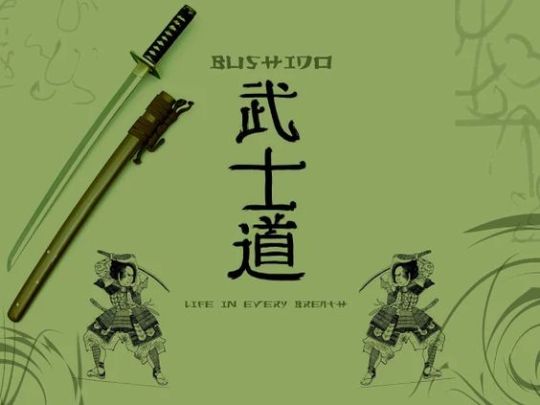
To read the complete article: http://www.artofmanliness.com/2008/09/14/the-bushido-code-the-eight-virtues-of-the-samurai/
1 note
·
View note
Text
Eu não vi a luz mas sei quem viu
TRIP / ESPIRITUALIDADE
POR LAURO HENRIQUES JR. 15.03.2012 TRIP #208
O jornalista mineiro Lauro Henriques Jr. passou dois anos entrevistando alguns dos maiores nomes da espiritualidade e do autoconhecimento de todo o mundo. Nas páginas a seguir, ele revela o que há em comum entre tantas tradições – e como essa experiência mexeu com sua vida.
"Certa vez, um sábio imperador convocou os pintores mais talentosos do mundo e lançou o desafio: daria um prêmio fabuloso àquele que fizesse o melhor retrato da paz. Mãos à obra, o resultado foi uma série dos quadros mais incríveis jamais vistos. Dentre eles, o monarca selecionou dois finalistas. No primeiro, via-se um lago cristalino, que refletia as montanhas verdejantes à sua volta e os pássaros voando no céu azul. Já no segundo, um despenhadeiro erguia-se sob um céu negro, cortado por relâmpagos, enquanto uma cachoeira desabava morro abaixo junto da tempestade. Todos se maravilhavam ao ver a primeira obra, já prevendo a sua vitória; afinal, a outra era o oposto da paz.
Porém, para assombro geral, foi justamente a segunda a escolhida pelo imperador, que explicou sua decisão: “Vocês não observaram o detalhe mais importante da pintura. Reparem ali”. Todos, enfim, notaram: atrás da cachoeira, saindo das ranhuras da rocha, havia um pequeno arbusto e, nele, um ninho de passarinho – nesse ninho, alheio ao caos reinante, a mãe passarinho chocava seus ovos em paz.
“Estar em paz não significa estar onde não há confusão ou dificuldades”, disse o imperador. “A verdadeira paz acontece quando, mesmo em meio a tudo isso, você permanece calmo em seu coração.”
A lenda desse vernissage imperial ilustra um ponto fundamental comum às mais diversas tradições espirituais, e que talvez sirva como um bom ponto de partida para o assunto dessas páginas, iluminação. Ela ensina que, assim como estar em paz não implica estar onde não há confusão, ser uma pessoa espiritualizada, ou “iluminada”, não significa estar isolado das demandas e questões do cotidiano.
Durante as conversas que renderam meu livro, Palavras de poder: entrevistas com grandes nomes da espiritualidade e do autoconhecimento no Brasil e no mundo (Editora Leya), entre tantas tradições e linhas de pensamento, uma coisa ficou bastante clara: a prática espiritual não é algo que se faça, necessariamente, em um templo, uma mesquita, uma sinagoga ou, quem sabe, em cavernas nos Himalaias. Os espaços sagrados, ou os retiros e as jornadas, são importantes e valorizados, mas todos aqueles entrevistados insistiam que o contato com o divino se dá, especialmente, no dia a dia, na banalidade do cotidiano, sem precisar de grandes aparatos para isso.
Uma das minhas entrevistadas, a budista Monja Coen, por exemplo, fala de como até uma simples caminhada pode ser um grande exercício de meditação. Você não precisa sentar-se numa almofada de estampas indianas, cruzar as pernas e fechar os olhos.Se, ao caminhar, alguém respira com tranquilidade, prestando atenção aos sons à sua volta, já está em meditação. Simples como isso.
Evidentemente, o fato de algo ser simples não significa que seja fácil de ser colocado em prática. Do mesmo jeito que o complicado, e aquilo que nos parece difícil, não quer dizer que seja impossível de fazer – os dois anos que passei me dedicando ao livro mostraram exatamente isso.
Mão na massa
O projeto do Palavras de poder é fruto de minha própria trajetória, das várias linhas e tradições com as quais entrei em contato ao longo dos anos, cada uma à sua maneira gerando transformações positivas em minha vida. Na maioria das vezes conheci essas vertentes graças à minha curiosidade: buscando tal autor citado em uma nota de rodapé; assistindo a tal workshop de respiração aqui; certa palestra sobre taoísmo ali; uma jornada xamânica acolá. Porém, não havia um livro que apresentasse tudo isso no mesmo pacote. E minha ideia foi justamente esta: reunir a essência de todas essas linhas, de forma clara, acessível, para ajudar as outras pessoas em seu próprio caminho – decidi escrever a obra que gostaria de ter lido.
Mas colocar em prática essa ideia simples foi uma empreitada que consumiu quase dois anos de labuta, trabalhando três turnos por dia, sem direito a férias nem feriados. Afinal, se no jornalismo muitas vezes já é bastante difícil acessar alguma fonte específica, para marcar uma entrevista com 26 pessoas, quase metade delas estrangeiras e todas com agendas extremamente lotadas, realmente é preciso uma ajudinha lá de cima para a coisa dar certo.
Por exemplo, com algumas pessoas, como a astróloga pop americana Susan Miller, gastei praticamente um ano de negociações entre o primeiro contato e o dia em que, finalmente, conseguimos realizar a entrevista. Só essa parte de produção para agendar os encontros exigiu uma troca de, literalmente, milhares de e-mails e telefonemas – isso sem contar, claro, o trabalho intenso de apuração, elaboração, transcrição e edição das entrevistas.
Salve o prazer
Todo suor, organização mental, gigabytes armazenados, quilômetros rodados e jogo de cintura ficam pequenos perto do prazer, dos encontros gratificantes e da enormidade de causos para contar. Um dos melhores ocorreu durante o encontro com o psicoterapeuta José Ângelo Gaiarsa (1920-2010), considerado o maior especialista brasileiro em comunicação não verbal, um iconoclasta que já foi o “terror das mamães conservadoras” por sua postura irreverente e sem papas na língua em relação a temas como família, amor e sexualidade. Com um currículo desses, o doutor Gaiarsa até se espantou quando o convidei para participar do projeto. A princípio, ele me disse: “Mas, Lauro, o que eu vou fazer em um livro sobre espiritualidade? Meus deuses são a mulher, o corpo, a criança”. Expliquei, então, que o livro não era sobre religião, mas que incluía as várias formas pelas quais a espiritualidade pode se manifestar em nossa vida, como a consciência em relação ao nosso próprio corpo.
Os espaços sagrados são importantes e valorizados, mas todos insistiam que o contato com o divino se dá, especialmente, na banalidade do cotidiano. Foram horas e horas de uma conversa riquíssima, em que o doutor Gaiarsa ia pontuando toda sua exposição com histórias surpreendentes, como o caso de um monge budista que passou por anos de preparação até que lhe fosse permitido entrar no templo mais sagrado de uma cidade no Tibete. Então, quando o sujeito finalmente teve autorização para entrar no templo, o que foi que avistou lá, em cima de um altar? Ele viu uma escultura maravilhosa de um casal em plena relação sexual, com a mulher e o homem sentados de frente um para o outro, num abraço em que se entrelaçavam totalmente. “E por que essa imagem está num altar? Porque o encontro sexual não é uma ‘transa’, ele é o ato da criação”, concluiu o doutor Gaiarsa.
A essa altura, já estávamos os dois completamente sintonizados, em profunda empatia, quando ele me disse: “Lauro, estou amando nossa conversa. Dessa sua espiritualidade eu gosto!”. Gaiarsa morreu poucos meses depois da nossa conversa, aos 90 anos.
O bom equilibrista
Foi a história contada pelo psicoterapeuta que me chamou a atenção para o quanto as palavras “espiritualidade” ou “iluminação” são assustadoras para a maior parte das pessoas. Como se o despertar espiritual fosse algo reservado a poucos eleitos, um feito inalcançável para alguém que, como eu e você, tem contas a pagar e horário para entrar no trabalho.
Acontece que, por paradoxal que pareça, as diversas tradições são convictas em afirmar que a iluminação espiritual não é algo a que se deva chegar. Pelo contrário, a maior parte afirma que basta reconhecer que a luz já existe em nós.
“A iluminação é sempre súbita, porque não é uma conquista”, disse o mestre indiano Osho. “Você está iluminado, mas não tem consciência disso. [O que chamamos de iluminação, na verdade] é a conscientização de que aquilo já existe.” E essa luz se manifesta sob a forma de ação em benefício do próximo – seja uma pessoa, um animal ou uma árvore. Evidentemente, não adianta se julgar um iluminado se seus atos não o são. Ou, como dizia uma frase que circulou na internet, “pouco importa praticar yoga e meditação e não cumprimentar o porteiro de seu prédio”.
Uma parte constante do aprendizado é se familiarizar com os erros. Somos humanos, falhos e sujeitos a cair. “O importante na vida não é ser uma pessoa equilibrada, mas ser um bom equilibrista” – mais uma das boas frases do doutor Gaiarsa.
Assim, a questão não é ficar o tempo todo querendo ser “o equilibrado”, “o iluminado” (correndo, naturalmente, o risco de virar “o chato”), mas ter a consciência de que, se escorreguei aqui, se vacilei ali, posso retornar de novo a meu centro e, a partir daí, procurar agir da melhor forma da próxima vez. Como afirmou o rabino cabalista Yehuda Berg em nossa entrevista: “O trabalho do mal é nos manter para baixo, e o nosso trabalho é lutar para voltar para cima. Não se trata da queda em si, mas de ser capaz de se levantar de novo”.
Uma rapidinha?
Agora, em meio a todo esse eterno balança-mas-não-cai, nada melhor do que procurar manter a leveza. Isso é algo que foi destacado por vários de meus entrevistados, como o Lama Surya Das, um budista americano considerado pelo próprio Dalai Lama um de seus conselheiros.
No caso da meditação, por exemplo, embora seus benefícios já estejam mais do que comprovados, pouquíssima gente tem a disciplina para meditar, nem que seja ao menos 20 minutos pela manhã. Bom, e qual é a sugestão do Lama Surya Das?
Em vez de ficar se martirizando por não conseguir meditar, procure dar uma rapidinha – ou melhor, várias rapidinhas! “Rapidinha” é como o Lama se refere a pequenas meditações de um minuto, que qualquer pessoa pode fazer em vários momentos ao longo do dia.
Pode ser enquanto espera o elevador, parado no trânsito, na fila do restaurante, no banheiro – oportunidades não faltam. Basta fazer uma respiração profunda, relaxar, ouvir os sons ao redor. Um minutinho apenas, e depois é tocar a vida adiante. Eu mesmo, enquanto escrevia o livro, fazia centenas de rapidinhas para dar conta do recado.
Aliás, em relação a meu encontro com o Lama Surya Das, aconteceu uma história bem bacana. Encontrei o Lama perto de Boston, Estados Unidos, nas proximidades do lago Walden – o mesmo em cujas margens viveu o escritor Henry D. Thoreau e que o inspirou a batizar sua obra-prima de Walden ou A vida nos bosques.
Caminhei por horas ao redor do lago antes de ir falar com ele, já entrando bem no clima. E, de fato, foi uma conversa de muitos insights e muita conexão. Terminado o papo, nos despedimos e, quando eu já saía pela porta, ele me chamou. Ao me virar, vi que ele vinha em minha direção, tirando o seu mala (espécie de terço de oração budista) do próprio pulso e colocando-o no meu. E ainda me contou que aquele era um presente que havia recebido do Dalai Lama em pessoa. Era mais do que uma pulseirinha, mas um instrumento que, para ele, representava toda uma linhagem à qual pertence. Foi naquele gesto que percebi o quanto o lama havia entendido a proposta do livro e me considerava digno de passar adiante as coisas sobre as quais havíamos conversado.
Tudo acontece como tem de ser
Susan e Donovan Thesenga, um casal de psicoterapeutas americanos, me deram uma grande lição sobre a aceitação plena da vida, como algo muito mais real e possível do que um amontoado de palavras edificantes.
Passei uma semana com eles numa área rural ao sul de Washington D.C., onde vivem. Ao chegar à cidade, liguei para Susan, que educadamente me disse que eles teriam de viajar “para resolver uma urgência na família”, mas que falaria pessoalmente comigo.
Encontrei o casal logo depois daquela ligação; serenos, apesar de objetivos. Haviam organizado tudo para minha estadia. Até um celular haviam providenciado para mim. Nos despedimos e eles, ambos com mais de 70 anos, pegaram a estrada. Começamos as sessões de entrevista no dia seguinte quando, segundo Susan, “tudo estava resolvido”. Não quis ser inconveniente e não perguntei sobre qual havia sido a urgência na família.
Ao longo das conversas que tivemos naquela semana, um ponto destacado por ambos foi o valor da aceitação, de que tudo acontece como tem que ser. Uma postura que, diga-se de passagem, não tem nada a ver com resignação. Não é a pessoa cortar o pé, perder o emprego e dizer: “Que ótimo!”. Mas aceitar que aconteceu e buscar entender qual o melhor aprendizado trazido por aquela situação.
Segundo eles, uma compreensão que só obtiveram após viver uma experiência extremamente difícil com a filha adotiva: ela passou dez anos viciada em heroína, com todo o inferno pessoal e familiar que uma situação dessas implica, até largar o vício. Mas realmente só tive a devida dimensão do que eles diziam sobre a aceitação no fim de minha estadia, quando, a convite do casal, participei de um workshop conduzido por eles. Nesse dia, Susan contou para o grupo que, no início da semana, haviam recebido uma denúncia de que a filha teria sucumbido à heroína de novo. Aquela era a urgência.
As pessoas que me receberam com toda a atenção quando cheguei eram as mesmas que, naquele dia, se deparavam com uma possível recaída da filha no vício. Só que, em vez de se descabelarem, estavam objetivamente fazendo o que precisava ser feito. E, felizmente, descobriram que a “denúncia” não era verdadeira.
Dar vida a esta vida em nossa vida
Outra comprovação da possibilidade prática de uma ação iluminada, mesmo diante dos eventos mais difíceis, veio durante meu encontro com a Monja Coen.
Como o budismo trata muito da questão do desapego, ela foi uma das únicas pessoas com quem abordei, diretamente, o tema da morte (com cada entrevistado, busquei levantar os temas mais pertinentes à sua linha específica).
Já estávamos no meio de nossa conversa, que transcorreu de forma profunda, mas bem-humorada, quando perguntei sobre o melhor meio de lidar com a perda de um ente querido. Então, na mesma serenidade com que vínhamos conversando, ela me disse que, apenas dois dias antes, havia perdido o pai, após um sofrido processo de doença. E sua resposta foi esta: “É uma experiência das mais difíceis. Por mais que alguém diga: ‘Já sou uma pessoa consciente, iluminada, não vou sentir nada’, é mentira.
Não há como ficar indiferente, pois nos toca, dói. Ao mesmo tempo, é essencial não se apegar a essa dor – não se apegar à pessoa que parte nem à dor que fica. Quando alguém que amamos se vai, uma parte dessa pessoa também fica em nós. O essencial é dar vida a essa vida em nossa vida.
Que qualidades tinha este ser que eu amava? Será que, em minha vida, consigo manifestar essas qualidades para os outros? Isso é muito importante. Assim, a pessoa que se foi não desaparece, pois continua viva em nós”.
Isso é de uma beleza e profundidade enormes. Ainda mais quando é dito de forma serena, amorosa, por alguém que, dias antes, havia passado pela perda do próprio pai. Na verdade, quando se fala da iluminação espiritual, um denominador comum ao discurso de diversas linhas é a importância de nos lembrarmos de que a morte pode acontecer a qualquer momento. Vários textos tratam de como a pessoa iluminada é aquela que tem consciência de que pode morrer a qualquer momento. E por que ela é iluminada? Porque não desperdiça mais a vida.
Por exemplo, você nunca ouve alguém que está no leito de morte arrepender-se por não ter comprado um carro novo, por não ter usado determinado vestido numa festa, esse tipo de coisa. O que se ouve é a pessoa arrepender-se por causa das brigas que teve com a família, por não ter passado mais tempo com os amigos, por não ter feito o que realmente gostaria. Agora, a questão é esta: ninguém precisa esperar chegar ao leito de morte para ter essa consciência – ou a chamada “iluminação”.
Todos iguais
Depois de falar com tanta gente boa, de todo o trabalho envolvido para dar vida aos dois volumes de Palavras de poder, uma certeza que fica é esta: se meu intuito com o projeto era o de ajudar as pessoas, a primeira pessoa que acabei ajudando foi a mim mesmo.
Ao longo do processo, minha vida foi ganhando em vários aspectos, como a certeza de que somos todos iguais, de que estamos aqui uns para ajudar os outros, uns para aprender com os outros.
Pude comprovar isso claramente a partir de uma proposta que fiz aos entrevistados, a de que cada um elaborasse uma pergunta para ser respondida por outro. E o resultado dessa “mesa-redonda” foi surpreendente, com sacadas bem interessantes, em que todos se dispuseram, sinceramente, a aprender uns com os outros.
O que mostra também que, apesar da diversidade de linhas e tradições, em essência, todas apontam para o mesmo ponto.
É como no caso de uma orquestra, em que você tem vários instrumentos diferentes, mas todos tocando juntos para compor a mesma harmonia.
Por fim, se há um aprendizado que fica em relação ao despertar espiritual é este: a verdadeira iluminação é aquela que se manifesta de modo prático na vida, sob a forma de mais amor, mais generosidade, mais tolerância, mais amizade, mais alegria. E com a grande vantagem de que sempre se pode dar uma rapidinha!
Eu só tenho um caminho
Três temas comuns na visão (incrivelmente semelhante) das diversas tradições
ACEITAÇÃO E GRATIDÃO
“Se não tenho plena aceitação de mim mesmo, passo a vida procurando a felicidade fora de mim. A atitude que busco pode ser resumida numa frase:
‘Entrego, confio, aceito e agradeço’”. Professor Hermógenes, um dos maiores difusores brasileiros da yoga
“Sabedoria é ter confiança, confiar que as coisas acontecem como têm que acontecer, confiar que, por trás de tudo, existe um movimento superior.” Roberto Otsu, professor de taoísmo
“Mesmo um evento que normalmente você diria ser uma tragédia pode ser um caminho de crescimento.” Susan e Donovan Thesenga, psicoterapeutas adeptos do Pathwork
“Uma crise pode ser um momento precioso, em que, por causa do sofrimento, sentimos uma ruptura em nossa percepção do mundo e surge uma busca espiritual mais profunda.” Dom Laurence Freeman, monge beneditino
“Não podemos culpar ninguém quando nos decepcionamos; nosso sofrimento vem de não aceitarmos que as coisas mudem, que elas não sejam do jeito que queremos.” Lama Surya Das, budista
COMPAIXÃO
“Este é o propósito que devemos ter: eu não faço algo pelo outro porque ele vai me achar maravilhosa por isso, eu faço porque é bom fazer, porque é bom ajudar.” Monja Coen, zen budista
“O impulso do herói, e que deve ser o impulso de cada um de nós, não é a autogratificação, é o serviço ao outro.” Robert Walter, presidente da Joseph Campbell Foundation
“A caridade significa a materialização do conhecimento espiritual libertador, transformado em socorro ao próximo. É o caminho de iluminação das pessoas.” Divaldo Franco, médium
“A vida só acontece quando eu troco influências, quando me envolvo, plenamente, comigo mesmo e com o outro. Quem não se envolve não se desenvolve.” José Ângelo Gaiarsa, psicoterapeuta
HUMILDADE
“Quando nos conhecemos de verdade, o outro pode pensar o que quiser sobre nós; não ficamos orgulhosos por causa de um elogio nem arrasados ao ouvir algo desagradável sobre nós.” Jean-Yves Leloup, padre ortodoxo
“Há duas regras para lidar com o estresse. Regra número 1: não se preocupar com ninharias. Regra número 2: tudo é ninharia.” Susan Andrews, astróloga
“A ‘doença do amanhã’ é o que nos mantém passivos. Passamos a vida deixando tudo para o outro dia. Mas será que vou estar vivo amanhã? É essencial nos lembrarmos de que a morte pode ocorrer a qualquer momento.” Artur Andrés, músico
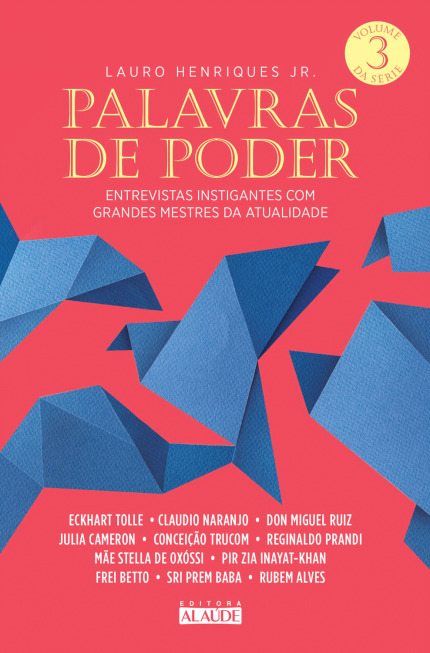
via http://revistatrip.uol.com.br/trip/eu-nao-vi-a-luz-mas-sei-quem-viu
0 notes
Text
Canal Mova
Monja Coen em palestra com o tema Arrependimento, Equilíbrio e Essência do ser para o Canal Mova
youtube
0 notes
Text
Rádio Mundial - Momento Zen
Monja Coen falando sobre Arrependimento na Rádio Mundial, em seu programa Momento Zen.
youtube
youtube
youtube
#rádio mundial#momento zen#budismo#monja coen#mantra#oração#terapia#espiritualidade#medicina alternativa
5 notes
·
View notes